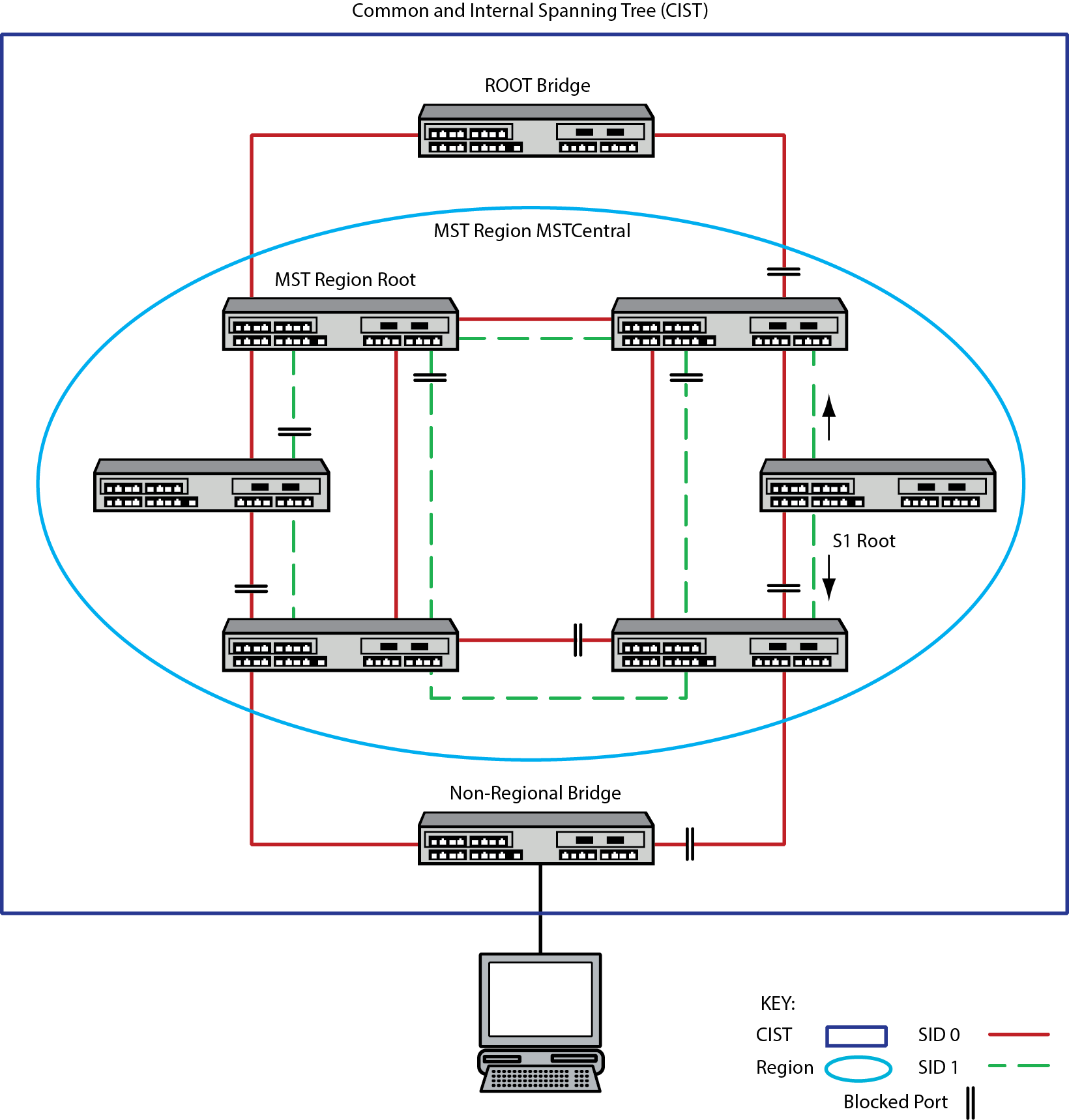The Multiple Spanning Tree Protocol (MSTP) provides for traffic forwarding on multiple ports for each bridge. A single Spanning Tree only allows for single root port forwarding per bridge. MSTP provides for a number of common network requirements that cannot be configured on a single Spanning Tree (for example, the segregation of traffic over multiple VLANs or optimizing the utilization of redundant links between switching devices in a network).
An MSTP configuration is made up of one or more:
An MSTP configuration is made up of zero or more Multiple Spanning Tree Instances (MSTIs). An MSTI is an SID that exists within an MST region other than the default SID 0.
All bridges in the Spanning Tree network are inter-connected by SID 0 and can belong to:
One or more MSTs can be part of the Common and Internal Spanning Tree (CIST). The CIST represents the connectivity of the entire network. Multiple Spanning Tree Overview provides an overview of an MST configuration with one MST region within the CIST. The MST region‘s configuration ID name is MSTCentral.

SID 0 is the default Spanning Tree and interconnects all bridges to the Root Bridge. SID 0 within the MST is the Internal Spanning Tree (IST) and provides connectivity out to the CST as well as functioning as another Spanning Tree instance within the MST region. SID 1 is an MSTI configured within the MST region.
Each SID has a root bridge. In Multiple Spanning Tree Overview the SID 0 root bridge belongs to the CST. The SID 0 root bridge functions as root for SID 0 Spanning Tree instance in both the CST and MST. SID 1 only exists within the MSTCentral region. The root for SID 1 is a bridge within the MSTCentral region. SID 1 can provide traffic segmentation by forwarding traffic on a second VLAN within the MSTCentral region or provide for optimization of redundant links by forwarding traffic within the MSTCentral region on the same VLAN.
See Configuring MSTP for examples of MSTP traffic segregation and optimization of redundant links.

Note
MSTP and RSTP are fully compatible and interoperable with each other and with legacy STP.
 Print
this page
Print
this page Email this topic
Email this topic Feedback
Feedback